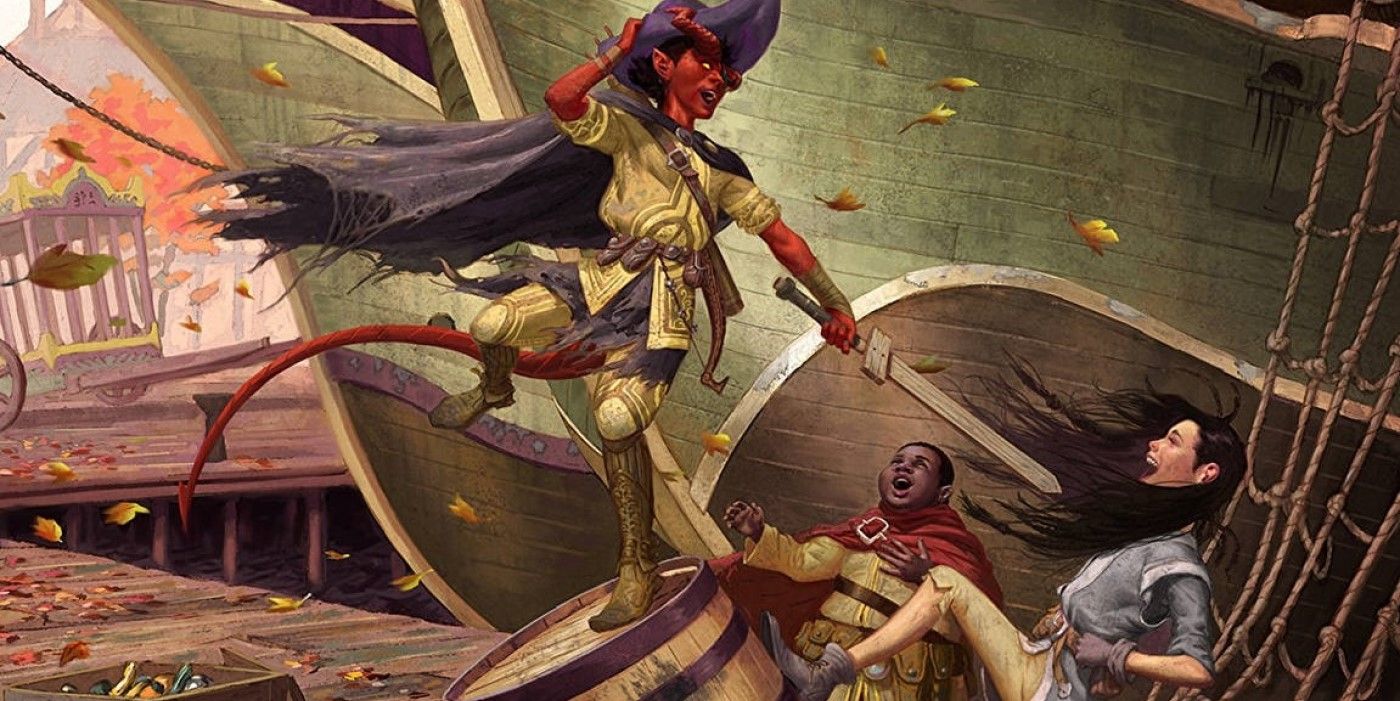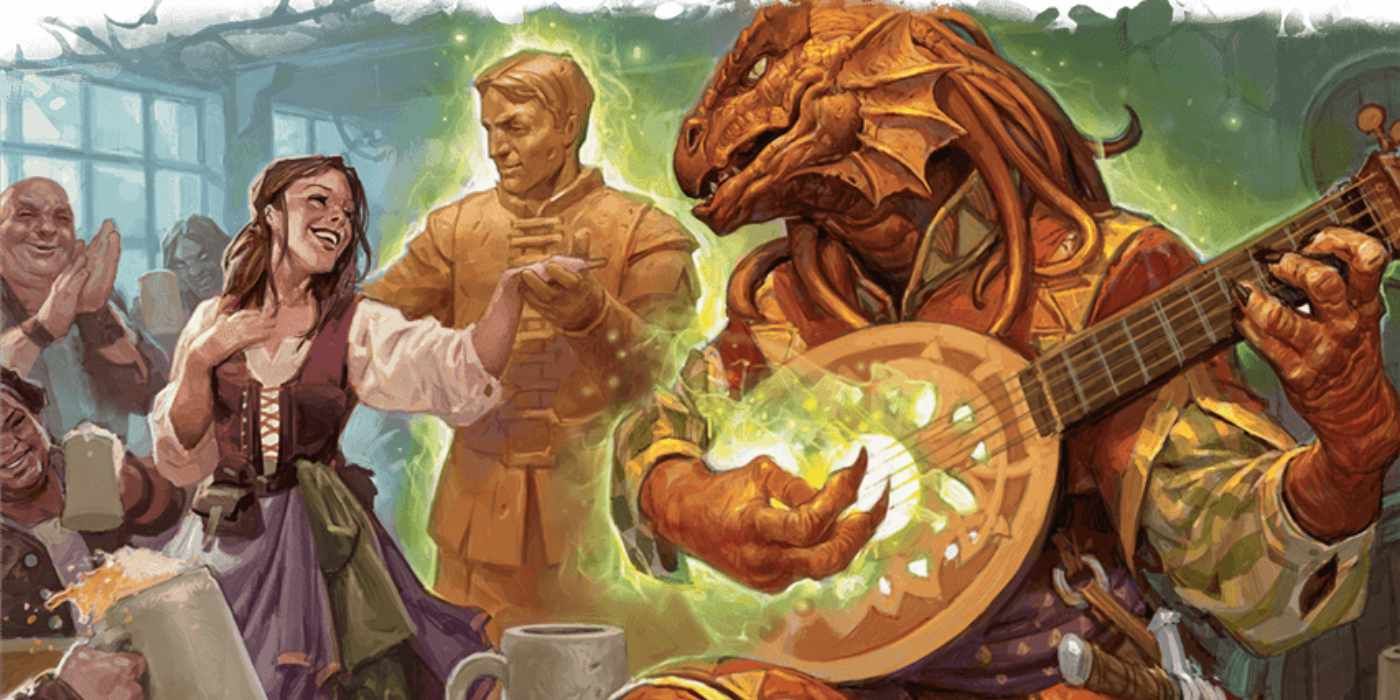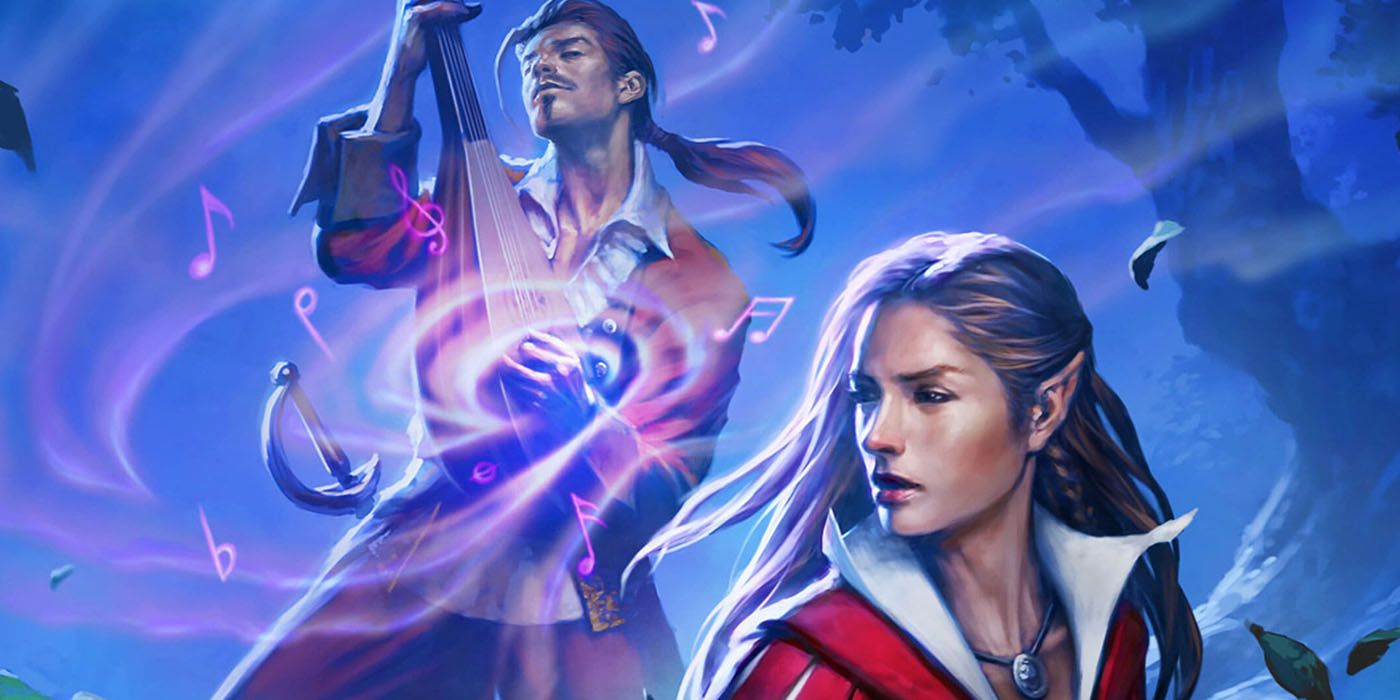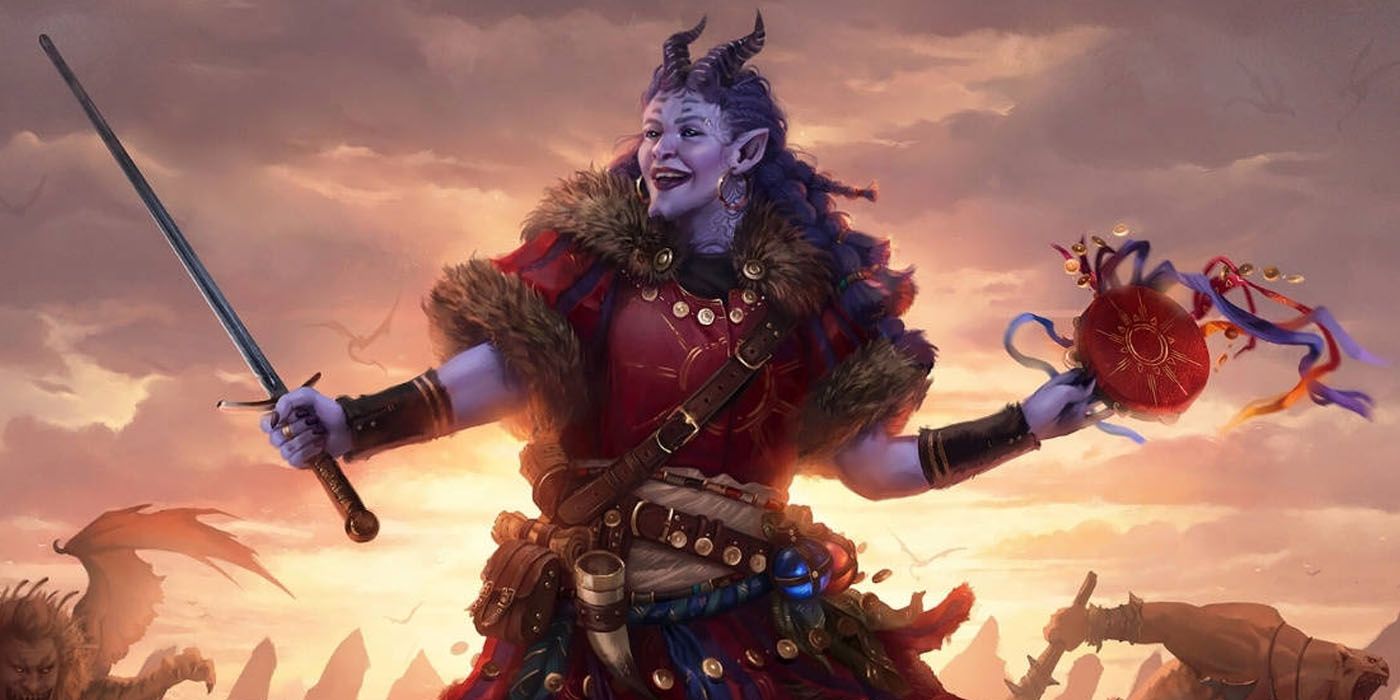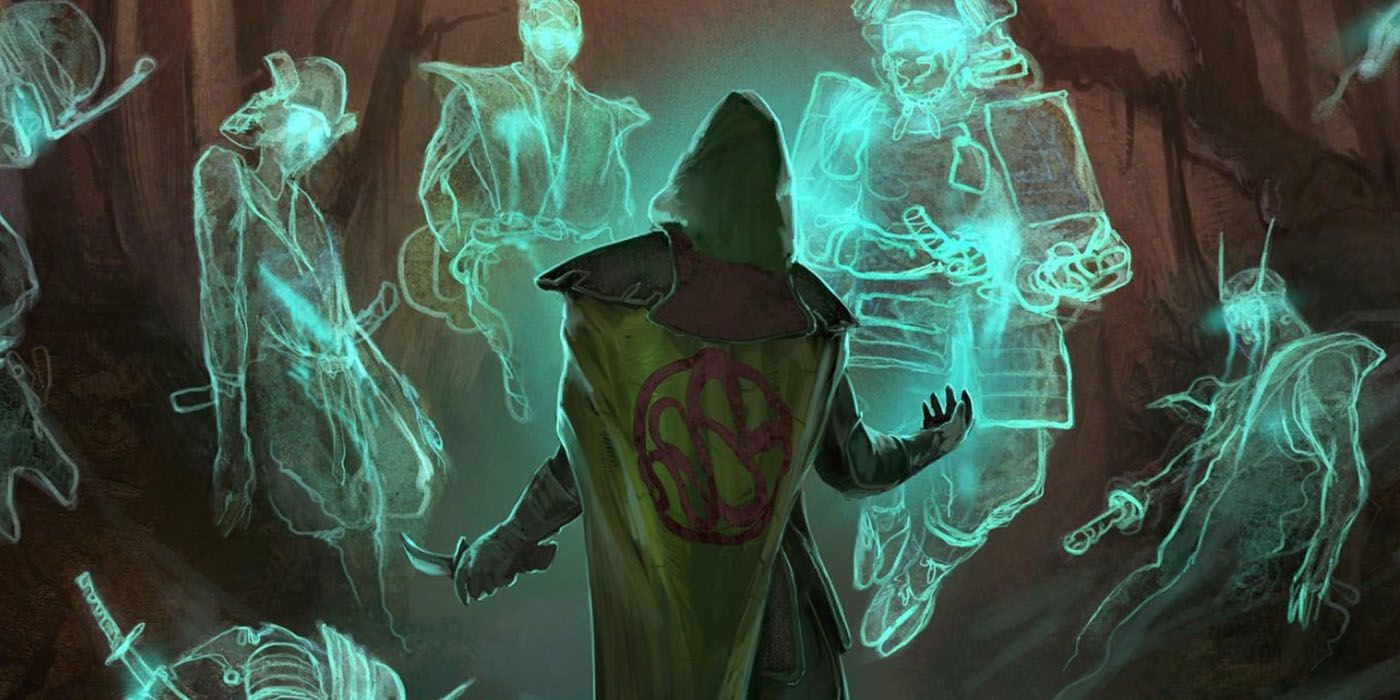When it comes to Dungeons & Dragons Fifth Edition, having a versatile character build can make all the difference, especially for players who don’t necessarily want to specialize in one particular area. This is where D&D bards come in handy, as they are one of the most versatile classes in the game.
D&D 5e‘s College of Swords bard is a particularly great option for players who want to leave a lasting impression with both their sword skills and their magical capabilities. A Bard who can flourish a blade while doling out a quick bonus action Healing Word can easily become one of the most reliable members of the party. However, D&D 5e College of Swords bards have to walk a fine line with their flexible and diverse abilities to be as valuable as possible.
Updated August 9th, 2023 by Isaac Williams: The College of Swords bard is one of D&D 5e’s most popular subclasses. It’s hard to make non-viable, but equally hard to make optimal. This article has been updated to give even more information about the best ways to build a College of Swords bard in D&D 5e, including background.
College of Swords Bard Build Summary
|
Ability Scores (in order of importance) |
Charisma, Dexterity, Constitution, Intelligence, Wisdom, Strength |
|
Race |
Satyr |
|
Background |
Entertainer (Gladiator), City Watch, Athlete |
|
Feats |
War Caster, Piercer, Fey Touched |
|
Spells |
Faerie Fire, Mirror Image, Shadow Blade, Haste |
Best College Of Swords Bard Stats
Because the College of Swords Bard depends on their ability to wield a blade as much as their performance capabilities, their two most imperative stats will be Charisma and Dexterity. Charisma provides them with all the right skills, like Performance, Persuasion, Intimidation and Deception. It’s also the stat they rely on for their magical abilities, contributing to their spell attack modifier and spell save DC.
Dexterity is also invaluable for a College of Swords bard in D&D 5e. Bards are more at home with Finesse weapons like scimitars and rapiers. The higher a College of Swords bard’s Dexterity, the more accurate and hard-hitting their attacks are. At the same time, Dexterity boosts a D&D 5e bard’s Armor Class, valuable skill checks like Acrobatics, and one of the game’s most common saving throws.
It’s also important to ensure a positive Constitution stat. Constitution affects hit points. As D&D 5e‘s College of Swords bards are most at home in melee combat, they need to be as resilient as possible. It’s also vital for maintaining Concentration on their most powerful spells, without which they are much weaker. Wisdom is useful for its vital saving throws, but it, Strength, and Intelligence are all viable dump stats with interesting roleplaying opportunities.
Best College Of Swords Bard Race
D&D 5e has plenty of race options that suit a bard. Aasimar, half-elf, and halfling all provide Charisma bonuses alongside other ability scores. However, for the College of Swords, it’s important to consider all of a character’s needs. Charisma and Dexterity will be key components, and the satyr race touches both of those important ability scores. Satyrs also get an additional five feet of movement speed at 35 feet per round, and while five feet might not seem like much, in the heat of the moment every step counts.
D&D 5e satyrs have the valuable Magic Resistance trait which gives them advantage on saving throws against spells and other magical effects. This makes them much harder to stop in combat and boosts their tankiness even further. Additionally, satyrs are proficient with Persuasion and Performance, freeing up a College of Swords bard’s other skill proficiencies for more esoteric or combat-focused choices.
Best College Of Swords Bard Background
Backgrounds are an easily-overlooked part of character creation in D&D. However, every part of the process ties in with creating the best possible College of Swords bard in D&D 5e. The background features don’t affect a character’s performance too much. However, the default skill proficiencies are vital for players who don’t want to create their own background. Many D&D 5e backgrounds provide beneficial skills for a bard.
The City Watch background gives Athletics and Insight proficiencies, helping a character both in and out of combat. Likewise, the Athlete background gives a D&D character Acrobatics and Athletics, helping with climbing, grappling, and more. However, the Entertainer background is ideal for a College of Swords bard build in D&D 5e. It gives Performance proficiency, freeing up the class proficiencies for other skills. Its Acrobatics synergizes with the build’s high Dexterity and makes it much harder to grapple.
Best College Of Swords Bard Feats
Feats can mean the difference between a competent D&D 5e character and an optimal one. A D&D College of Swords bard build can get by on just Ability Score Increases. Between Charisma, Dexterity, and Constitution, they can struggle to keep their ability scores high as it is. However, some feats either help with this or are powerful enough in their own right to take precedence.
War Caster is one of D&D 5e‘s best feats for almost any caster. It’s even more valuable for College of Swords bard build. It allows them to cast spells even when both hands are occupied, such as by weapons. Similarly, a D&D 5e College of Swords bard is well-placed to get opportunity attacks, which War Caster replaces with spells. The other best feats for a College of Swords bard are half feats. Piercer can give +1 to Dexterity, letting a bard keep their attacking stat high. It also provides a consistent damage boost that adds up over many turns. Fey Touched expands a bard’s repertoire and gives them free casts of invaluable combat spells like Misty Step, on top of a +1 to Charisma.
The Best D&D Spells for the College of Swords
Most bards rely on magic above all else. However, a College of Swords bard in D&D 5e works best when their magic enhances their swordplay. The most popular way to build a College of Swords bard is with copious buff spells. Heroism, Enlarge/Reduce, Polymorph, and Greater Invisibility are all popular D&D bard spells for this build. However, a College of Swords bard’s real spellcasting strength comes from Magical Secrets. Bards can access the best buff spells from any spell list in D&D 5e. A College of Swords bard build becomes much more lethal with Haste or an upcast Shadow Blade boosting their damage significantly.
Some D&D 5e College of Swords bards prefer a different approach. It’s also viable to cast debuffing spells to weaken foes and then finish them off with swordplay. Faerie Fire, Hideous Laughter, Bane, Heat Metal, Hypnotic Pattern, and more all tilt a fight in the bard’s favor. At the same time, no College of Swords bard should ignore healing spells. Even just Healing Word can let a bard kill an enemy and save an ally from death in the same turn.
